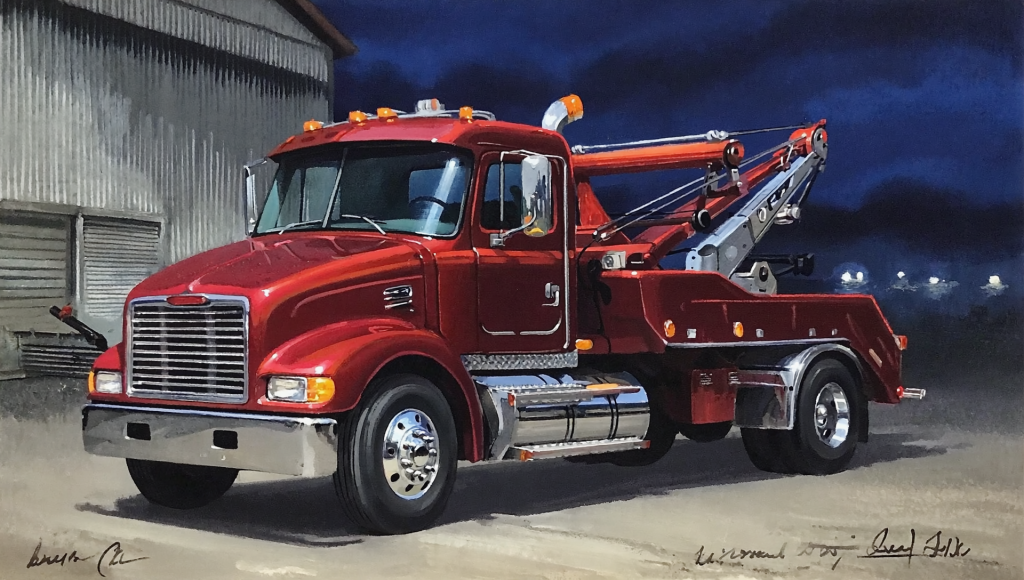Understanding Repo Trucks: What You Need to Know

Repo trucks play a critical role in the automotive financing landscape, serving as the backbone of vehicle repossession services. When borrowers default on loans, these specialized vehicles are deployed to recover assets, helping lenders minimize losses. This article provides a comprehensive guide to repo trucks, covering their function, evolution, technological features, operational processes, and the legal and ethical considerations surrounding repossession. Whether you are a financial professional, an automotive enthusiast, or simply curious about the behind-the-scenes mechanics of repossession, this guide will offer valuable insights into the world of repo trucks.
In today’s dynamic auto finance market, understanding repo trucks is essential. They are not just heavy-duty vehicles; they are sophisticated machines designed to safely and efficiently recover vehicles while adhering to legal standards. With continuous advancements in technology, modern repo trucks are equipped with cutting-edge tools that enhance both performance and safety. This article will delve into the history and evolution of repo trucks, the technology behind them, and the procedures followed during repossession. By the end, readers will have a thorough understanding of what repo trucks are, how they operate, and why they are indispensable to the auto lending industry.
What Are Repo Trucks and How Do They Work?
Repo trucks, also known as repossession trucks or recovery vehicles, are specially designed trucks used by repossession agents to recover vehicles when borrowers default on their loans. The process of repossession is a legal remedy that allows lenders to reclaim property in order to recover unpaid debts. Repo trucks are built for durability and efficiency, often featuring reinforced bodies, specialized towing equipment, and secure cargo areas to transport recovered vehicles safely.
The operation of a repo truck begins when a lender initiates the repossession process due to missed payments or a breach of loan terms. Repossession agents, using these trucks, locate the vehicle and, if necessary, work quickly to secure and tow it without causing damage. The design of repo trucks focuses on stability and control, ensuring that the vehicle is handled carefully throughout the recovery process.
The Evolution and History of Repo Trucks
The concept of vehicle repossession dates back several decades, evolving in parallel with the growth of the auto finance industry. In the early days, repossession was a rudimentary process that often involved basic tow trucks with minimal equipment. As the auto lending market expanded, so did the need for more specialized and efficient recovery vehicles.
Over time, advancements in automotive engineering and technology led to the development of repo trucks that are not only robust but also more sophisticated in terms of design and functionality. Modern repo trucks incorporate advanced features such as computerized tracking systems, enhanced suspension for heavy loads, and secure storage compartments. These improvements have made the repossession process safer for both the agents and the borrowers, while also reducing the risk of damage to the vehicles being recovered.
The history of repo trucks reflects broader trends in the automotive and finance industries, highlighting the continuous need for innovation in response to changing economic conditions and technological advancements.
Technological Advancements in Modern Repo Trucks
Today’s repo trucks are far more advanced than their predecessors. One of the key technological advancements is the integration of digital tracking and communication systems. GPS and real-time data monitoring allow repossession agents to locate vehicles quickly and accurately, ensuring efficient operations. These systems also provide valuable data for lenders, helping them track the status and location of recovered vehicles.
Modern repo trucks are also equipped with advanced towing mechanisms. Automated winches, hydraulic lifts, and secure locking systems ensure that the vehicle is safely attached to the truck and transported without incident. Enhanced safety features, such as backup cameras, collision avoidance sensors, and reinforced structures, protect both the recovered vehicle and the repossession crew during transport.
Furthermore, many repo trucks now come with onboard diagnostic tools that help assess the condition of a vehicle upon recovery. This information is critical for determining the next steps, whether it involves reselling the vehicle, repairing it, or taking legal action. The integration of these technologies has significantly improved the overall efficiency and reliability of the repossession process.
The Operational Process of Repo Trucks
The operational process of repo trucks begins with a detailed investigation by the lender or a collection agency. Once a vehicle is flagged for repossession, the process is initiated through a series of legal notifications and due diligence checks. Repo agents then use their trucks to locate and secure the vehicle.
Upon arrival at the vehicle’s location, the agent must verify ownership and ensure that repossession is legally justified. This often involves checking the vehicle’s registration and confirming the borrower’s default status. After verification, the repo truck is used to tow the vehicle using specialized equipment that minimizes the risk of damage. Throughout the process, the agent must adhere to legal protocols to avoid disputes or litigation.
Once the vehicle is secured on the truck, it is transported to a designated storage facility or auction site where further actions, such as repairs or resale, can take place. The entire process is carefully documented, including photographic evidence and detailed records of the repossession event, which are critical in case of any subsequent legal proceedings.
Legal and Ethical Considerations
Repossession is a legally regulated process, and repo trucks operate within a strict framework of rules and regulations. Lenders and repo agents must ensure that all actions comply with state and federal laws to protect the rights of both the borrower and the lender. This includes proper notification, due process, and the respectful handling of the recovered vehicle.
Ethical considerations also play a crucial role in the repossession process. Agents are trained to handle situations with professionalism and sensitivity, recognizing that repossession can be a stressful and emotional experience for borrowers. Maintaining a balance between the financial interests of the lender and the dignity of the borrower is essential.
Legal disputes can arise if the repossession process is not conducted properly. Therefore, both lenders and repo agencies invest in training and technology to ensure that their operations are compliant and that the rights of all parties are safeguarded.
Future Trends in Repo Truck Technology and Operations
Looking ahead, the future of repo trucks is poised for further innovation driven by advancements in technology and changing market dynamics. One emerging trend is the increased use of artificial intelligence and machine learning to optimize route planning and improve the efficiency of repossession operations. These technologies can analyze data in real time to predict the best routes, minimize fuel consumption, and reduce operational costs.
Additionally, the integration of more sophisticated digital tools, such as enhanced telematics and real-time vehicle diagnostics, will further streamline the repossession process. As auto financing and consumer behavior continue to evolve, repo trucks will likely become even more specialized, with customizable features that cater to specific types of vehicles and repossession scenarios.
Environmental considerations are also shaping the future of repo truck design. With a growing emphasis on sustainability, manufacturers are exploring the use of eco-friendly materials and energy-efficient technologies in the production of repo trucks. Electric and hybrid repo trucks may soon become more common, reducing the carbon footprint of repossession operations while maintaining high performance.
The collaborative efforts between technology providers, automotive manufacturers, and financial institutions will be key to driving these innovations forward. As these trends develop, repo trucks will continue to play an essential role in the auto finance ecosystem, evolving to meet the demands of a changing market while upholding legal and ethical standards.
In conclusion, repo trucks are much more than simple towing vehicles; they are a critical component of the auto financing system. By efficiently recovering vehicles in cases of default, they help lenders mitigate financial losses and maintain market stability. With advancements in technology and a focus on legal and ethical practices, the future of repo truck operations looks promising. As the industry continues to innovate, these specialized vehicles will undoubtedly become even more efficient, sustainable, and integral to the auto finance landscape.





